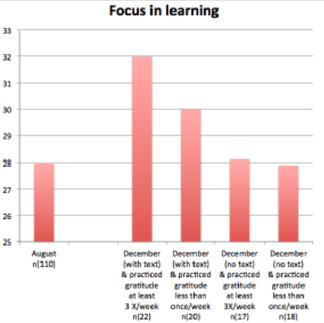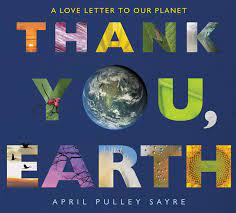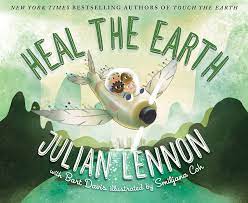The Act of Gratitude
- charlenesacher
- May 24, 2021
- 4 min read

I have decided to look through Robin Wall Kimmerer’s book Braiding Sweetgrass and look for opportunities to use her wisdom to guide my teaching and personal growth. I will work with my students over the next couple of weeks, and my own children (aged 7, 10, 12), to look at how I can incorporate the important role of journaling. Their journals will weave together gratitude, observations, and stories. Just as Kimmerer “weaves a braid from three strands: Indigenous ways of knowing, scientific knowledge, and the story of an Anishinabek scientist” (2013), I will encourage my students to pause and look for the miracles within nature, the science all around them, and their own story as they weave between the two.

Mental health issues are on the rise, and one of the proven ways to support mental wellness is through journaling. It effectively addresses mild to moderate anxiety and increases resiliency in all age groups (Smyth et al., 2018). The role of teaching, especially now during COVID, to help students “deal with the mental health burdens of the pandemic” (Marques de Miranda et al., 2020). Gratitude is linked gratitude to everything from improved psychological well-being to better physical health. Grateful people tend to sleep better and even live longer” (Nguyen S. & Gordon C., 2019). “A growing body of groundbreaking research shows that gratitude has the power to heal, energize, and transform lives by enhancing people psychologically, spiritually, physically, and cognitively...the practice of gratitude also has an impact on focus and resilience in learning” (Wilson, 2016, p. 1).
I will be challenging my students to practice the art of gratitude, which they are already familiar with as we have a gratitude journal already. This time, I want them to practice this through the lens of what nature freely gives to us. Once they begin to count all of the ways they are given gifts, they “will feel awash in gifts, wealthy beyond belief” (Kimmerer, 2013, p. 154 & 111).
I will begin this process by sharing two special books with my students during our morning meeting and with my own children.
This will allow us to begin thinking about how we are grateful for the gifts that nature gives us. There are multiple scavenger hunts that prompt students to this, as well as writing, prompts.
I also want students to look at nature through a scientific lens. This is how so many nature journals are focused already. I have used journals in the past, and I found that it is important not to do every nature walk as the at gets tedious and boring, but to sprinkle this activity now and again. “Drawing the treasures found in nature naturally encourages children to notice the details – big and small. It’s during the sketching that....children will notice things they might otherwise pass right on by” (West, 2020). Cindy West points out that Nature journals reinforce observation skills, builds scientific language, encourages creativity, document learning, practice research-based practices, and so much more (2020). I want them to see the world through the scientific eye, yet combine this with the creative, the knowledge of knowledge keepers. I will ask if my friend, who has shared this wisdom with our class in the past, be willing to share once again the stories of the plants and animals that live in our community.
Students will tie their own stories into the journal, similar to the stories that Dr. Kimmerer weaves in her book. There are multiple pages included in the journal that will allow students to add their own story and memory. Students will be able to write or draw about a time that they felt close to nature, some lessons nature has taught them, and how they give back to our more-than-human world.

As we do not know right now if June will be in person or learning-from-home, I am making up a journal that will allow for me to give instructions to children virtually and have them participate in it independently throughout the day and then be ready to share what they worked on throughout the week. I have added many pages to the book, more than we will get to over the next twenty-plus days, but that is because I want my students to have a choice in what they write, draw, explore and dive deeper into. I want to gift them with the opportunity to guide their own learning. I am hoping that they can draw on all the aspects of being: mind, body, emotion, and spirit (Kimmerer, 2013, p. 47) and that they can move between each of these, just as the bees move from flower to flower.

Below is the journal that I have created by using many other journals and putting it into one that will hopefully meet my needs. I will keep you posted on how it is going.
References
Allen, S. (2021, February 27). Free Printable Nature Journal. Teachers Pay Teachers. https://www.teacherspayteachers.com/Product/Free-Printable-Nature-Journal-6629009.
Cub Collection. (2020, October 7). Nature Journal - Printable Book. Teachers Pay Teachers. https://www.teacherspayteachers.com/Product/Nature-Journal-Printable-Book-6105468.
Kimmerer, R. W. (2013). Braiding Sweetgrass: Indigenous Wisdom, Scientific Knowledge, and the Teachings of Plants. Milkweed Editions.
Learning to the Moon and Back. (2018, April 25). My Summer Nature Journal. Teachers Pay Teachers. https://www.teacherspayteachers.com/Product/My-Summer-Nature-Journal-3781866.
Lennon, J. (2020, May 7). Heal The Earth. YouTube. https://youtu.be/HosNJvqAMBE.
Little Pine Learners (Ed.). (2020, March 20). Outdoor Nature Walk and Scavenger Hunt Activities. Teachers Pay Teachers. https://www.teacherspayteachers.com/Product/Outdoor-Nature-Walk-and-Scavenger-Hunt-Activities-5352032.
Marques de Miranda, D., da Silva Athanasio, B., Sena Oliveira, A. C., & Simoes-E-Silva, A. C. (2020, December). How is COVID-19 pandemic impacting the mental health of children and adolescents? International journal of disaster risk reduction: IJDRR. https://www.ncbi.nlm.nih.gov/pmc/articles/PMC7481176/.
Nguyen SP, Gordon CL. The Relationship Between Gratitude and Happiness in Young Children. Journal of Happiness Studies. November 2019. doi:10.1007/s10902-019-00188-6
Pulley Sayre, A. (2021, April 19). Thank You, Earth: Storytime Read Aloud. YouTube. https://youtu.be/vsuDx6JAZoU.
Rayl, E. (2020, December 2). Gratitude Lesson With a Nature Scavenger Hunt Printable. Teachers Pay Teachers - Teaching Comes Alive Outside. https://www.teacherspayteachers.com/Product/Gratitude-Lesson-With-a-Nature-Scavenger-Hunt-Printable-6278484.
Smyth, J. M., Johnson, J. A., Auer, B. J., Lehman, E., Talamo, G., & Sciamanna, C. N. (2018, December 10). Online Positive Affect Journaling in the Improvement of Mental Distress and Well-Being in General Medical Patients With Elevated Anxiety Symptoms: A Preliminary Randomized Controlled Trial. JMIR mental health. https://www.ncbi.nlm.nih.gov/pmc/articles/PMC6305886/.
West, C. (2020, August 30). Why Nature Journals Are Important. https://ourjourneywestward.com/nature-journals-important/.
Wilson, J. T. (2016). Brightening the Mind: The Impact of Practicing Gratitude on Focus and Resilience in Learning. Journal of the Scholarship of Teaching and Learning, 16(4), 1–13. https://doi.org/10.14434/josotl.v16i4.19998



















Comments